Chatbot vs Live Chat A Head-to-Head Comparison
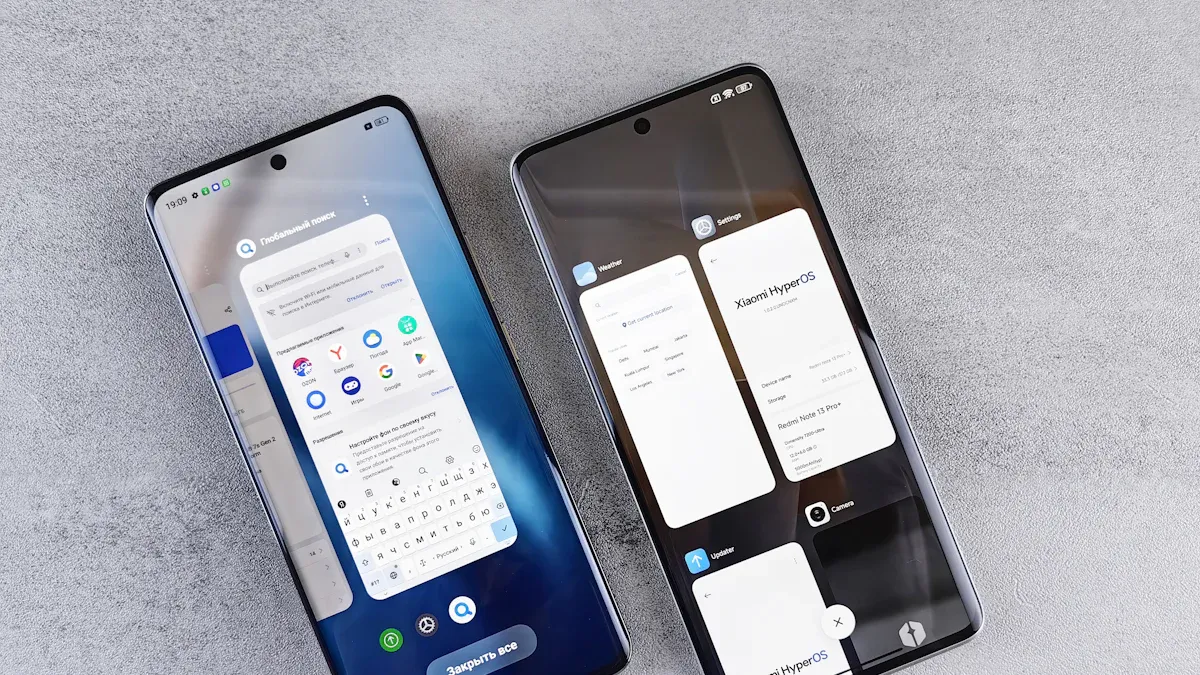
Choosing the right tool for sales, marketing, and support is a critical business challenge. The chatbot vs live chat decision directly impacts customer service and how customers perceive a brand. This guide clarifies the live chat vs chatbots and chat support vs chat bot debate, helping you decide how to choose between live chat and chatbots.
Chatbots offer 24/7 automated support, handling the 30-40% of simple queries modern customers have. In contrast, live chat provides the personalized assistance that builds loyalty. The best customer support often combines the efficiency of a chatbot and the empathy of live chat. Powerful chatbots and live chat can enhance customer service.
With tools like Sobot AI and the Sobot call center, businesses can integrate chatbots and live chat. Let Sobot help you embark on your contact journey.
What is a Chatbot?
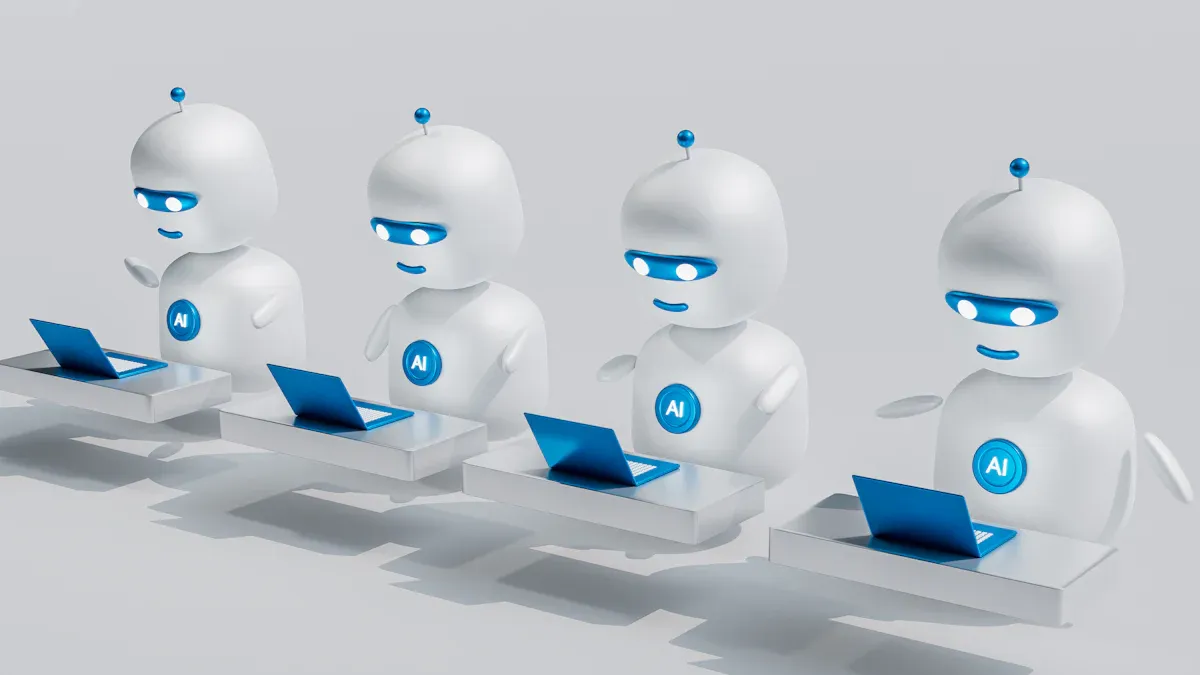
A chatbot is a computer program designed to simulate human conversation through text or voice. These tools allow businesses to automate communication and provide instant support to users. Modern chatbots are becoming increasingly sophisticated, moving beyond simple, pre-programmed responses.
Defining Automated Conversations
At its core, a chatbot engages in automated conversations. Advanced chatbots use conversational AI, which combines machine learning (ML) and natural language processing (NLP) to understand, process, and respond to human language. This technology enables a chatbot to do more than just answer basic questions.
The process works in a few simple steps:
- A user provides input through text or voice.
- The chatbot analyzes the input to understand the user's intent.
- It then generates the most appropriate response based on its programming and data.
- Finally, the chatbot delivers the answer back to the user.
This allows chatbots to handle FAQs, troubleshoot issues, and even engage in simple small talk, offering a new level of automated support.
Types of Chatbots
Not all chatbots are the same. They primarily fall into a few categories, each suited for different tasks. Understanding these types helps businesses choose the right chatbot for their needs.
- Rule-Based Chatbots: These are the simplest types of chatbots. They operate on pre-defined rules and scripts, following a decision-tree logic. Rule-based chatbots are excellent for straightforward tasks like answering common questions or booking appointments but cannot handle queries outside their script.
- AI-Powered Chatbots: These intelligent chatbots use AI and NLP to understand context, intent, and sentiment. They can handle complex conversations and learn from interactions to improve over time. These chatbots provide more dynamic and personalized customer support.
- Hybrid Chatbots: Many modern chatbot solutions combine both approaches. A hybrid chatbot uses rules for simple, common questions and switches to AI for more complex issues. This model balances cost-effectiveness with advanced capabilities, offering flexible and efficient support.
What is Live Chat?
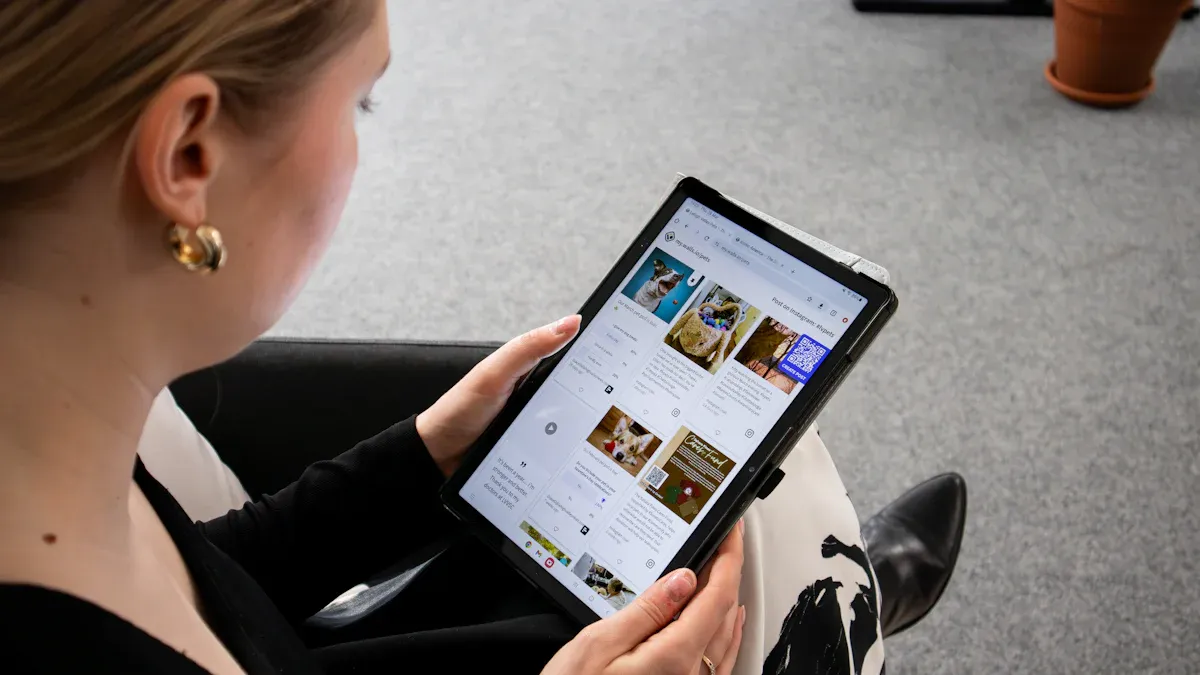
Live chat is a powerful tool for customer engagement. It provides a way for customers to have instant conversations with a service representative. Businesses use live chat software to add a chat box to their website or mobile app. This feature allows for direct, real-time communication with customers. The system connects customers to human support agents. This connection offers immediate responses to questions and concerns. Live chat provides a personal touch with greater speed and convenience. It is a key part of modern customer support strategies.
Defining Real-Time Human Support
Real-time human support is the core of live chat. Unlike automated systems, live chat involves a person helping another person. This human interaction builds trust and can solve complex problems that a chatbot might not understand. It provides real-time support for customers who need immediate help. This form of real-time communication helps businesses engage directly with visitors on their sites. Good live chat support can turn a frustrated visitor into a loyal customer. The goal of live chat is to offer helpful, empathetic assistance exactly when it is needed.
How Sobot Live Chat Works
Sobot's live chat platform enhances real-time human support. It creates a unified workspace for agents. This system brings together messages from many channels into one place. Agents can manage conversations from the website, email, and social media without switching screens. Sobot’s live chat uses advanced tools to help agents provide better support.
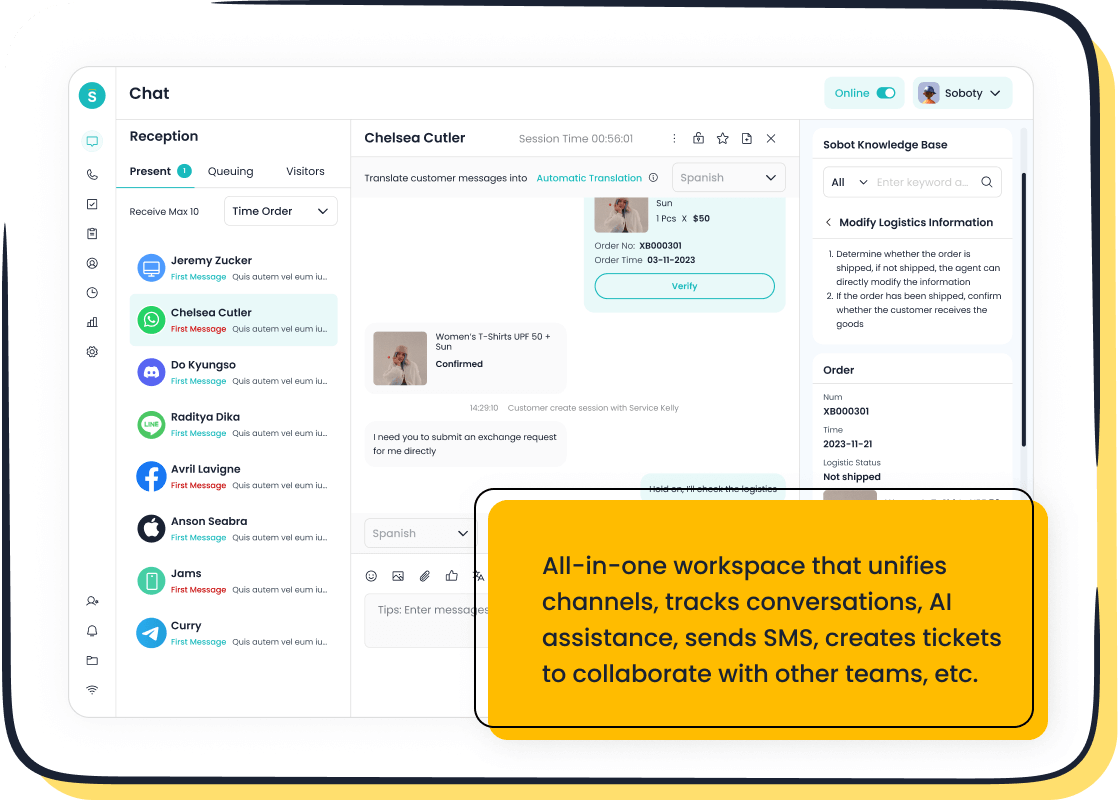
For example, Sobot’s platform includes:
- Omnichannel AI: This covers customer touchpoints across chat, email, voice, and social media.
- AI Copilot: This feature assists human agents, helping them find answers and respond faster.
- Generative AI: This technology ensures agents deliver accurate and helpful responses.
This approach combines human expertise with AI efficiency. The live chat software helps agents deliver excellent service, making the entire support process smoother for everyone.
Feature Breakdown: Chatbot vs Live Chat
An informed decision between a chatbot and live chat requires a detailed comparison of their core features. This section breaks down the key differences to help you understand which tool best fits your business needs. We will explore everything from cost and availability to customer experience and scalability, providing a clear picture of the chatbot vs live chat landscape.
To start, let's look at a high-level comparison of these two powerful customer service tools.
| Feature | Chatbots | Live Chat |
|---|---|---|
| Cost | Lower operational cost; one-time/subscription fee. | Higher operational cost; ongoing agent salaries. |
| Availability | 24/7, instant responses. | Limited to agent work hours. |
| Response Time | Instant. | Averages around 45 seconds. |
| Query Complexity | Best for simple, repetitive questions. | Ideal for complex, nuanced, or emotional issues. |
| Personalization | Based on data and user history. | Deep, empathetic, and relationship-building. |
| Scalability | Highly scalable; handles unlimited chats. | Limited by the number of agents. |
| Data Collection | Excellent for automated lead capture and data gathering. | Gathers qualitative insights through conversation. |
Cost and ROI
Cost is a major factor when choosing between chatbots and live chat. Chatbots generally have a lower operational cost. Businesses typically pay a one-time setup fee or a recurring subscription. This contrasts with live chat, which requires ongoing salary costs for human agents.
This difference becomes significant at scale. For a business handling 5,000 tickets a month, a chatbot solution could lead to substantial monthly savings by handling a large portion of those inquiries automatically. While a live chat agent requires salary, benefits, and training, a chatbot works around the clock without these recurring human resource expenses. The initial investment in a chatbot, whether through a subscription or custom development, often yields a strong return by improving efficiency and reducing labor costs.
Availability and Response Time
Availability and response speed are critical for modern customer satisfaction. Here, chatbots have a clear advantage. A chatbot offers 24/7 support, providing immediate responses to customer inquiries at any time of day. This ensures that customers receive help instantly, even outside of standard business hours.
In contrast, live chat availability depends on agent schedules. The average first response time for a live chat agent is about 45 seconds. While this is much faster than email or phone support, it cannot match the instant nature of a chatbot. During peak hours or when agents are busy, customers may face wait times. The superior response speed of chatbots helps manage customer expectations and provides quick issue resolution for simple problems.
Handling Query Complexity
The effectiveness of chatbots and live chat often depends on the complexity of the customer's question.
- Chatbots excel at handling high volumes of simple, repetitive queries. They are perfect for answering frequently asked questions, checking order statuses, or providing basic product information.
- Live Chat is essential for complex, sensitive, or multi-step problems. A human agent can understand nuance, show empathy, and troubleshoot unique issues that a chatbot's script cannot handle. The human touch is irreplaceable when a customer is frustrated or needs detailed guidance.
The best customer support strategies use chatbots as the first line of defense, escalating more complex issues to a live chat agent. This hybrid approach ensures both efficiency and quality service.
Customer Experience and Personalization
Both tools can create a positive customer experience, but they do so in different ways. Chatbots offer personalization by using data to recognize returning customers and access their history. They can provide quick, accurate answers, which improves the customer experience by saving time.
However, live chat provides a deeper level of personalization. A human agent can build rapport, understand emotional cues, and tailor the conversation in real-time. This human touch fosters loyalty and trust. For example, Sobot's Live Chat uses precise customer profiling and an omnichannel presence to deliver tailored service. This approach helps turn visitors into clients, leading to a 38% gain in conversion. An omnichannel strategy significantly boosts engagement and revenue.
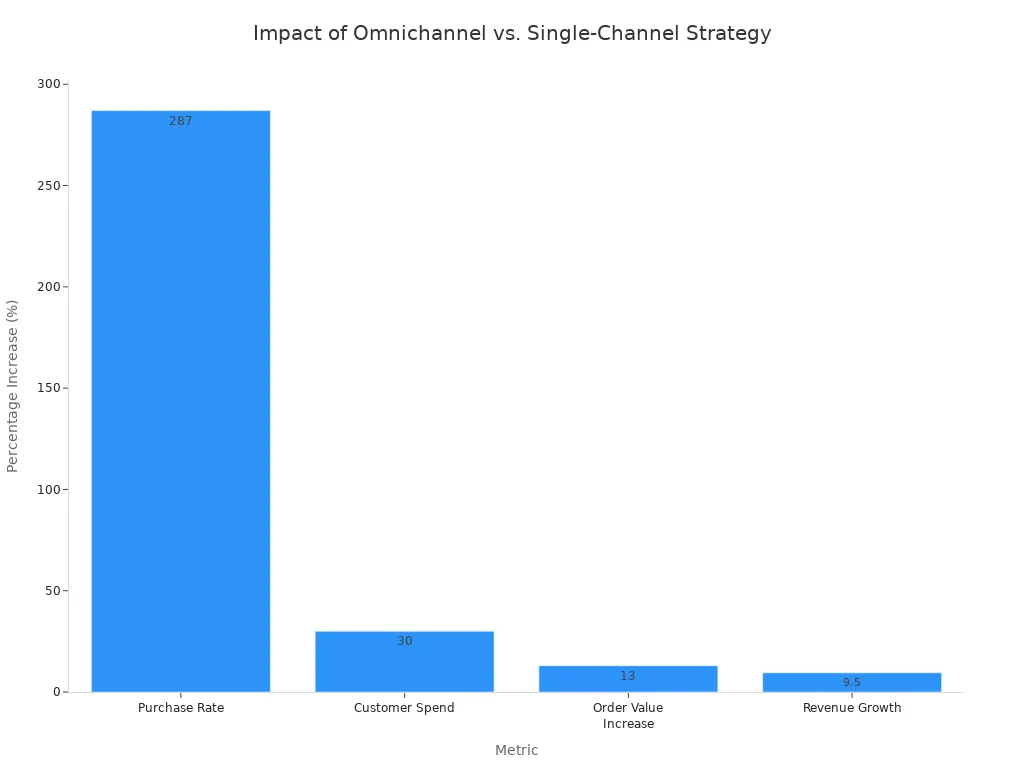
Scalability and Volume
Scalability is a key differentiator in the chat support vs chat bot debate. Chatbots are highly scalable. A single chatbot can handle thousands of conversations simultaneously without a drop in performance or an increase in cost. This makes them ideal for businesses that experience high query volumes or seasonal peaks in traffic.
Live chat, on the other hand, has scalability limitations. Each live chat agent can only manage a few conversations at once (typically 2-3). To scale live chat support, a business must hire more agents, which increases operational costs for salaries, training, and infrastructure. During unexpected demand spikes, live chat teams can become overwhelmed, leading to longer wait times and a decline in customer service quality. The inherent scalability of chatbots makes them a more efficient solution for managing large volumes of customer interactions.
Lead Generation and Data Collection
Both chatbots and live chat are valuable tools for lead generation and data collection. Chatbots can automate this process 24/7. They can proactively engage website visitors with targeted questions to qualify them as leads.
A chatbot can be programmed to:
- Capture Leads: Gather key information like name, email, and company details.
- Qualify Leads: Ask questions about budget, needs, and timeline to determine lead quality.
- Schedule Follow-Ups: Book demos or meetings directly in the chat interface.
Live chat agents also collect valuable data, but their strength lies in gathering qualitative insights. Through natural conversation, agents can uncover customer pain points, motivations, and feedback that might not be captured through an automated script. This information is invaluable for improving products and services. Integrating live chat software with a CRM allows agents to manually or automatically log this rich data, creating comprehensive customer profiles. The live chat vs chatbots discussion shows that a combination of both offers the most robust data collection strategy.
The Verdict: Live Chat vs Chatbots
Deciding between a chatbot and live chat is not about picking a winner. It is about understanding the right tool for the right job. The chatbot vs live chat debate often misses this point. The best strategy depends on your business goals, customer needs, and the complexity of your support inquiries. This section provides a clear verdict on how to choose between live chat and chatbots.
When to Use a Chatbot
A chatbot is the ideal solution for specific business scenarios where speed and efficiency are top priorities. Businesses can use a chatbot to automate tasks and provide instant support. This improves the customer experience by offering quick issue resolution.
Consider using chatbots in these situations:
- 💡 24/7 Customer Support: A chatbot offers round-the-clock service. This is crucial for global companies or businesses with limited agent resources. Chatbots answer simple questions when human support teams are offline, ensuring customers always get help.
- 🎯 Lead Generation: Chatbots can capture and qualify leads automatically. They collect visitor information, turning anonymous traffic into valuable leads without immediate human intervention.
- ⚙️ High Traffic Volume: Businesses with many customer inquiries can use chatbots to handle common questions. This reduces wait times and frees up human agents for more complex tasks.
- 🛒 Order-Related Help: E-commerce businesses use chatbots to help customers check order status or answer questions about online purchases. This aligns customer support directly with the sales process.
When to Use a Live Chat
Live chat is essential when a human touch is needed to solve complex problems and build relationships. While chatbots handle volume, live chat agents manage nuance, empathy, and intricate issues. This direct engagement is vital for customer satisfaction and loyalty.
Live chat is especially critical in certain industries:
- E-commerce and Retail: Agents on live chat manage customer expectations about inventory, shipping, and product details in real-time. This support boosts conversions.
- Travel and Hospitality: Live chat provides instant answers for booking changes, check-in details, and cancellation policies, which is very helpful for travelers.
- Healthcare: This channel offers a discreet way to schedule appointments or ask about sensitive health concerns, reducing wait times for patients.
- Finance and Insurance: Live chat builds trust by offering instant, accurate access to information about banking services or insurance plans.
In these fields, the ability of live chat to provide detailed, empathetic support is irreplaceable. It helps customers feel heard and valued.
Chat Support vs Chat Bot: Key Scenarios
The chat support vs chat bot decision becomes clearer when you look at specific scenarios. One tool excels where the other falls short. The choice between live chat vs chatbots depends entirely on the customer's need at that moment. A chatbot provides excellent response speed, but live chat offers deeper engagement.
This table breaks down the sufficiency of each tool in common customer service situations.
| Scenario | Chatbot Sufficiency | Live Chat Sufficiency |
|---|---|---|
| Simple, repetitive queries | High. Can handle FAQs and basic information retrieval efficiently. | Low. Human agents are overqualified for these tasks. |
| Complex, nuanced issues | Low. Struggles with understanding context and deep problem-solving. | High. Human agents excel at complex problem-solving. |
| 24/7 availability | High. Can operate continuously without breaks. | Low. Requires expensive staffing for multiple shifts. |
| Personalized, empathetic interactions | Low. Lacks genuine empathy and the ability to build rapport. | High. Agents offer personalization and build relationships. |
| High volume of concurrent chats | High. Can manage thousands of conversations simultaneously. | Low. Agents can only handle a few chats at once. |
| Handling sensitive or emotional topics | Low. Cannot offer the emotional support required. | High. Human agents are crucial for providing reassurance. |
| Technical support and complex troubleshooting | Low. Can provide pre-programmed solutions but struggles with unique issues. | High. Agents can perform in-depth diagnostics and offer tailored solutions. |
The following chart visually summarizes the strengths and weaknesses in the chat support vs chat bot comparison.
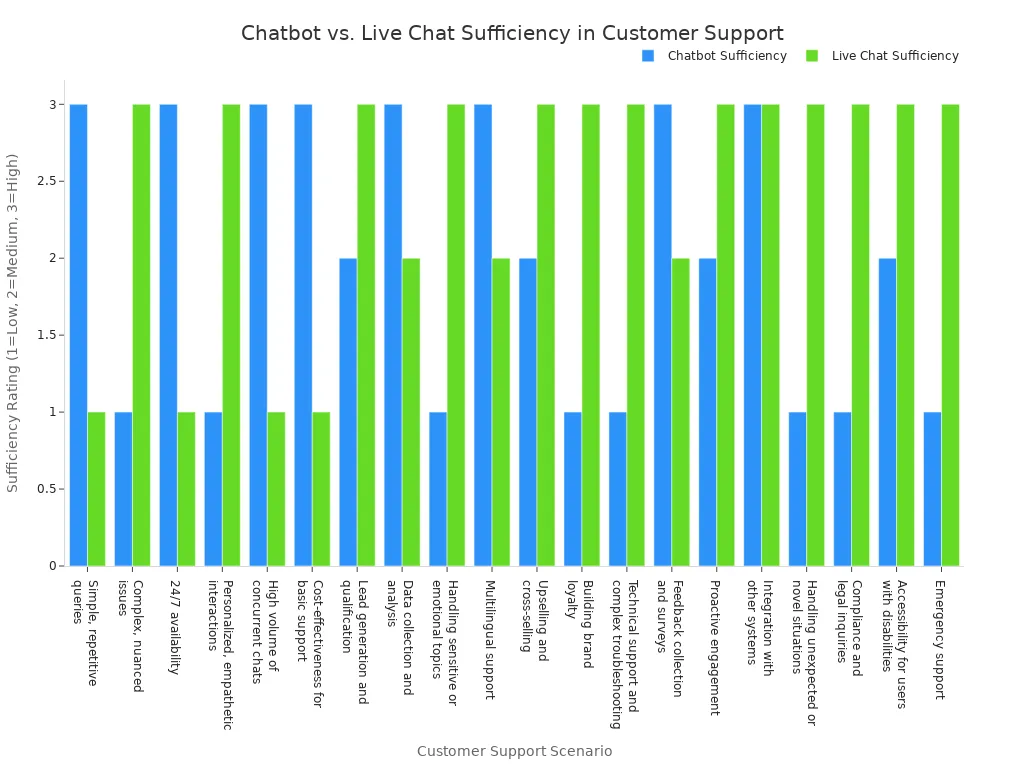
As the data shows, the debate of live chat vs chatbots is not about which is better overall, but which is better for a specific task.
The Hybrid Model: Sobot's All-in-One Solution
The ultimate verdict in the live chat vs chatbots discussion is that you do not have to choose. The most powerful approach is a hybrid model that combines the strengths of both. This strategy uses chatbots for efficiency and live chat for empathy and expertise.
An integrated solution offers numerous benefits:
- Faster response speed
- Improved efficiency and reduced costs
- Higher customer satisfaction
- Scalable support 24/7
- Personalized interactions from live chat agents
Sobot provides an all-in-one contact center solution that perfectly blends these tools. The system uses a powerful chatbot to handle initial inquiries and simple questions. This provides immediate responses and filters requests. When a customer has a complex or sensitive issue, the conversation is seamlessly handed over to a human agent using Sobot's live chat platform. This ensures a great customer experience.
OPPO, a leading smart device company, used Sobot’s hybrid approach. They achieved an 83% chatbot resolution rate and a 94% positive feedback rate. This proves how effective integrating these tools is for improving customer service and efficiency.
This human-machine cooperation is the future of customer support. It resolves the chat support vs chat bot dilemma by creating a single, unified system. It leverages automation without sacrificing the human touch, delivering the best of both worlds for your customers and your business.
A Hybrid Model in Action: OPPO and Sobot
Theory is helpful, but real-world examples show true power. OPPO, a leading global smart device company, provides a perfect case study. They successfully used a hybrid model from Sobot to transform their customer service. This shows how combining chatbots and live chat drives real results.
The Challenge: High Volume and Complexity
OPPO faced a major customer service challenge during peak shopping periods. The company saw a huge increase in questions from customers. This surge created long wait times. Human agents were overwhelmed with repetitive inquiries. The complexity of smart device questions required detailed support. OPPO needed a solution to manage high volume without sacrificing service quality.
The Solution: Human-Machine Cooperation
OPPO implemented Sobot's integrated chatbot and ticketing system. This created a powerful human-machine partnership. The strategy used a chatbot as the first point of contact. These chatbots handled the high volume of simple, common questions. This freed up human agents. The agents could then use live chat to focus on complex problems that required a human touch. This approach streamlined the entire support process for better efficiency.
The Results: A Boost in Efficiency and Sales
The results of this hybrid strategy were impressive.
OPPO's Sobot chatbot achieved an 83% resolution rate. This meant most customers received instant answers from the chatbots. The company also saw a 94% positive feedback score, showing high customer satisfaction.
This improved customer experience had a direct impact on sales. OPPO recorded a 57% increase in its repurchase rate. The effective use of chatbots and live chat not only improved efficiency but also built stronger relationships with customers, encouraging them to buy again. This proves the value of a well-executed live chat and chatbot system.
Implementation Strategy
A successful hybrid model requires a clear implementation strategy. Businesses must plan how to integrate channels, manage the handoff from chatbot to human, and measure performance. A thoughtful approach ensures a smooth transition and effective customer service.
Integrating Your Channels
First, a business must integrate its communication channels. This process creates a unified experience for customers across platforms like websites, social media, and messaging apps. A successful live chat integration involves several key steps.
- Identify Core Channels: Determine where most customers interact, such as your website or WhatsApp.
- Choose the Right Solution: Select a chatbot platform that supports multiple channels.
- Define Automation Scope: Decide which tasks the chatbot will handle, like answering FAQs.
- Test Thoroughly: Before launch, test the chatbot on all channels to find and fix errors.
This structured approach ensures the chatbot and live chat tools work together seamlessly.
Designing the Chatbot-to-Agent Handoff
A smooth handoff from a chatbot to a live chat agent is critical for good customer service. The customer should not have to repeat information. The process should be transparent and efficient.
Best practices include providing a visible "Talk to a human" button. The chatbot should also recognize when it cannot help and initiate the transfer.
When the handoff occurs, the system must pass the full chat history to the live chat agent. This gives the agent context to solve the problem quickly. Informing the user about their queue position also helps manage expectations during the wait. This seamless transition is a key part of quality customer service.
Measuring Success with Analytics
Businesses must measure the success of their hybrid strategy with analytics. Key performance indicators (KPIs) show what is working and what needs improvement. Tracking these metrics helps optimize the chatbot and live chat system for better performance and customer satisfaction.
Key metrics to monitor include:
- Bot Deflection Rate: This shows how often the chatbot resolves an issue without human help.
- Bot-to-Human Handoff Rate: This tracks how often the chatbot escalates a chat to an agent.
- Customer Satisfaction Score (CSAT): This measures customer happiness with the interaction.
- First Contact Resolution (FCR): This shows if an issue was solved in the first interaction.
Analyzing this data helps businesses refine their customer service operations and improve efficiency.
The live chat vs chatbots decision is not about choosing a winner. Chatbots provide unmatched scalability and 24/7 customer service, handling up to 79% of routine questions. Live chat delivers the human touch customers need for complex problems. The best customer service strategy combines the efficiency of chatbots with the empathy of live chat. This hybrid approach improves customer service for all customers. Sobot's all-in-one contact center offers this powerful blend, boosting efficiency and scalability while ensuring a quality human touch for superior customer service and live chat experiences.
FAQ
What is the main difference between a chatbot and live chat?
A chatbot is an automated program that provides instant, 24/7 answers to simple questions. Live chat connects customers with a human agent for help with complex or sensitive issues. Chatbots offer speed, while live chat provides a personal touch.
How do I choose between a chatbot and live chat?
Your choice depends on your business needs.
Use a chatbot for high-volume, repetitive questions and 24/7 support. Use live chat for complex problem-solving, building customer relationships, and handling sales inquiries that require a human expert.
Why is a hybrid model of chatbot and live chat effective?
A hybrid model combines the strengths of both tools. A chatbot handles simple queries instantly. It then passes complex issues to a live chat agent. This approach improves efficiency, reduces costs, and ensures customers always receive the right type of support.
Which is more cost-effective, a chatbot or live chat?
A chatbot is generally more cost-effective for handling a large volume of inquiries. It involves a subscription or setup fee. Live chat requires ongoing costs for agent salaries and training. The best choice depends on your support needs and budget.
See Also
Comparing the Best Live Chat Platforms: A 2024 Overview
Understanding Live Chat Support Expenses: A Comprehensive Pricing Guide
The 10 Best Live Chat Tools: Shopify's Edge Against Rivals
Selecting the Ideal Chatbot Software: Your Ultimate Decision-Making Guide
Live Chat Versus Email: Unveiling the Superior Customer Communication Benefits
